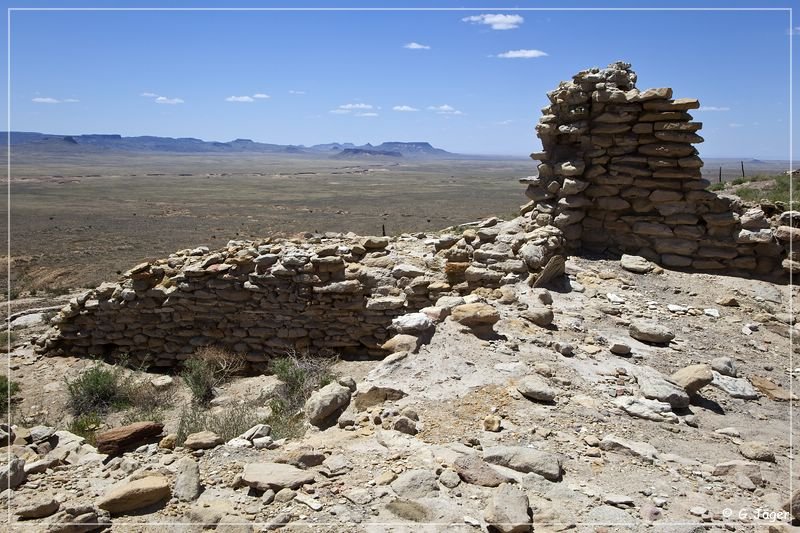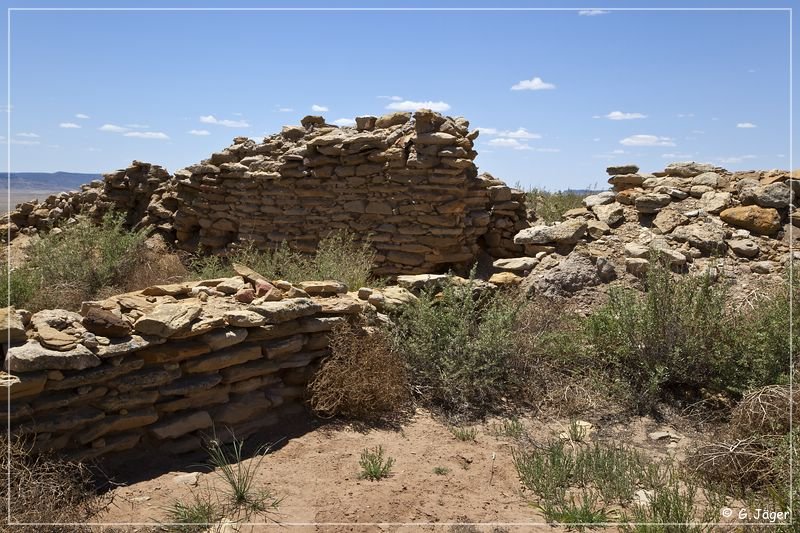
Awatovi: The Silent Sentinel of Hopi History
The vast, ochre-dusted expanse of northeastern Arizona holds secrets etched deep into its arid soil and soaring mesas. Here, under an unforgiving sun and a sky that stretches into eternity, lies Awatovi – a name that resonates with both the grandeur of ancient Pueblo civilization and the profound tragedy of its demise. Not merely a collection of ruins, Awatovi is a silent sentinel, a stark reminder of cultural collision, fierce independence, and the enduring power of history whispered across centuries.
Perched atop Antelope Mesa, overlooking the sprawling Jeddito Valley, Awatovi was once a thriving Hopi pueblo, a vibrant center of trade, art, and spiritual life for nearly 500 years. Its history is a microcosm of the larger narrative of the American Southwest: a saga of indigenous ingenuity, the arrival of European powers, and the cataclysmic clash of two vastly different worlds. Today, the site remains largely off-limits to the public, protected by the Hopi Tribe as a sacred and sensitive ancestral land, its stories primarily told through archaeological findings and the oral traditions of the Hopi people themselves.
A Cradle of Culture: Before the Spanish Shadow

Long before the first European footsteps disturbed the desert dust, Awatovi was a formidable settlement. Established around 1100 AD, it grew to become one of the largest and most influential of the Hopi pueblos, its population swelling to perhaps 1,500 to 2,000 inhabitants at its peak. Strategically located, it served as a vital hub for trade, exchanging goods like cotton, corn, and exquisite pottery with other Pueblo groups, the Ancestral Puebloans (Anasazi) to the north, and potentially even distant Mesoamerican cultures.
The people of Awatovi were master artisans. Their pottery, particularly the distinctive Jeddito Yellow Ware, is celebrated for its intricate designs and high quality, often adorned with geometric patterns, bird motifs, and stylized human figures. These ceramics, along with the remnants of finely woven textiles and elaborate kiva murals, speak to a rich spiritual and aesthetic life, deeply intertwined with the cycles of nature and complex ceremonial practices. The kivas – subterranean ceremonial chambers – were the heart of their spiritual world, places where rituals were performed to ensure bountiful harvests, rain, and the continuation of life.
The Cross and the Serpent: Spanish Arrival and Cultural Clash
The relative peace and self-sufficiency of Awatovi were irrevocably shattered in 1540 with the arrival of the Spanish conquistador Don Pedro de Tovar, a lieutenant of Francisco Vázquez de Coronado. Tovar’s expedition, guided by Zuni informants, was the first European contact with the Hopi. Initially, the encounter was cautious, marked by curiosity and an exchange of goods. But this was merely the prelude to a far more profound and disruptive presence.
By the early 17th century, Spanish Franciscan friars began establishing missions among the Hopi, driven by a zealous desire to convert the "heathen" natives to Catholicism. At Awatovi, Mission San Bernardino was established in 1629, a massive stone church built directly over and around existing Hopi structures, including sacred kivas. This physical act symbolized the Spanish intent: to supplant indigenous beliefs and practices with their own.
The friars brought not only their religion but also European diseases, which decimated the native population, and a system of forced labor and tribute. They suppressed traditional ceremonies, destroyed religious artifacts, and punished those who clung to their ancestral ways. For the Hopi, whose worldview was holistic and deeply connected to the land and their ancestral spirits, this imposition was an existential threat. The clash was not just religious; it was a fundamental conflict of governance, social structure, and cosmic understanding.
The Pueblo Revolt and Awatovi’s Dilemma
The simmering resentment and oppression across the entire Pueblo world finally erupted in 1680 with the Great Pueblo Revolt, a meticulously planned and remarkably successful uprising led by Po’pay from Ohkay Owingeh. The Hopi, including Awatovi, actively participated, expelling the Spanish friars and soldiers from their lands and destroying the missions. For a brief period, the Pueblos regained their autonomy, a powerful testament to their resilience and unity.

However, the Spanish eventually returned, re-establishing their control over many eastern pueblos. The Hopi, geographically more isolated, largely managed to keep them at bay. Yet, within the Hopi mesas, tensions began to rise. Some pueblos, like Oraibi, fiercely advocated for a complete rejection of all Spanish influence, viewing any compromise as a betrayal of their cultural purity. Awatovi, perhaps due to its earlier and more prolonged exposure to Spanish culture, or perhaps for strategic reasons related to trade and resources, seemed more amenable to re-establishing a degree of contact.
This internal division proved to be Awatovi’s undoing.
The Cataclysm: The Destruction of 1700
The events of 1700-1701 represent one of the darkest chapters in Hopi history. According to Hopi oral tradition, the leaders of Awatovi had begun to show signs of once again welcoming Franciscan friars and Spanish influence, possibly even sending delegates to the Spanish capital in Santa Fe. This perceived apostasy was intolerable to the other, more traditional Hopi pueblos, particularly Oraibi, whose leaders believed Awatovi was jeopardizing the very soul of the Hopi people.
A decision was made. A punitive expedition, composed of warriors from other Hopi villages, descended upon Awatovi under the cover of darkness. The attack was swift and brutal. Accounts vary in detail, but the outcome is chillingly consistent: the men of Awatovi were gathered in kivas, where they were suffocated by smoke and ash, or killed as they emerged. The women and children were either taken captive and dispersed among the other pueblos or killed. The pueblo itself was systematically destroyed, burned, and its walls pulled down, never to be rebuilt. It was a deliberate act of cultural eradication, a harsh lesson against assimilation, designed to purify the Hopi world and preserve their traditional way of life.
The destruction of Awatovi sent a clear message: the Hopi would resist any attempts to dilute their culture, even if it meant turning on their own kin. The site has remained largely abandoned ever since, a stark and desolate monument to a devastating internal conflict.
Unearthing the Past: Archaeology at Awatovi
For centuries, Awatovi lay undisturbed, its ruins slowly succumbing to the elements, its stories fading into legend. It wasn’t until the late 19th and early 20th centuries that archaeological interest brought the site back into the historical spotlight.
The pioneering work of Jesse Walter Fewkes of the Smithsonian Institution began in the late 1890s, offering the first systematic documentation of the ruins. Fewkes’s excavations uncovered significant architectural remains and a wealth of artifacts, providing crucial insights into the pueblo’s pre-contact and mission-era life.
The most extensive and scientifically rigorous excavations were conducted in the 1930s by the Peabody Museum of Harvard University, under the direction of J.O. Brew. Brew’s expedition was monumental in scope, involving years of field work and the recovery of hundreds of thousands of artifacts. Their meticulous documentation of architectural layers revealed the superimposition of Spanish mission structures over earlier Hopi kivas, vividly illustrating the cultural conflict. They unearthed stunning kiva murals that had been carefully plastered over by the Spanish, only to be rediscovered centuries later, showcasing the vibrant artistic traditions that persisted despite suppression.
"Awatovi provides an unparalleled record of cultural contact and conflict," Brew later noted, "where the physical remains eloquently speak of a clash of civilizations." The finds included not only pottery and tools but also human remains, providing invaluable, albeit sensitive, data about the health, diet, and spiritual practices of the inhabitants. These archaeological efforts pieced together the narrative of Awatovi’s rise, its interactions with the Spanish, and its tragic end, offering tangible evidence to corroborate Hopi oral traditions.
A Living Legacy: Respect and Remembrance
Today, Awatovi remains a place of profound significance for the Hopi people. It is not merely an archaeological site but a sacred landscape, a place where ancestors lived, struggled, and died. Its closure to general public access is a testament to the Hopi Tribe’s commitment to protecting their cultural heritage, ensuring that the site is treated with the reverence it deserves.
The lessons of Awatovi are many. It is a stark reminder of the devastating consequences of cultural imposition and the fierce human will to preserve identity. It highlights the complexities of colonial encounters, where indigenous populations were not passive victims but active agents, making difficult choices that often led to tragic outcomes. For the Hopi, Awatovi serves as a cautionary tale, a scar on their collective memory that reinforces the importance of unity and adherence to traditional ways.
In recent decades, there have been ongoing efforts between the Hopi Tribe and institutions like the Peabody Museum for the repatriation of ancestral remains and artifacts. This process is vital for healing historical wounds and for ensuring that the stories of Awatovi are told and honored by the descendants of those who lived and died there.
As the wind whispers across Antelope Mesa, carrying the scent of sagebrush and the echoes of a vanished past, Awatovi stands as a silent, powerful monument. Its ruined walls speak not of defeat, but of endurance; not of disappearance, but of a profound and living legacy. It is a place where history is not just read in books but felt in the very air, a timeless testament to the complexities of human civilization and the enduring spirit of a people determined to remember. Awatovi is a reminder that some stories, though centuries old, continue to resonate with urgent relevance in our modern world, urging us to listen, learn, and respect the silent sentinels of our shared human journey.


